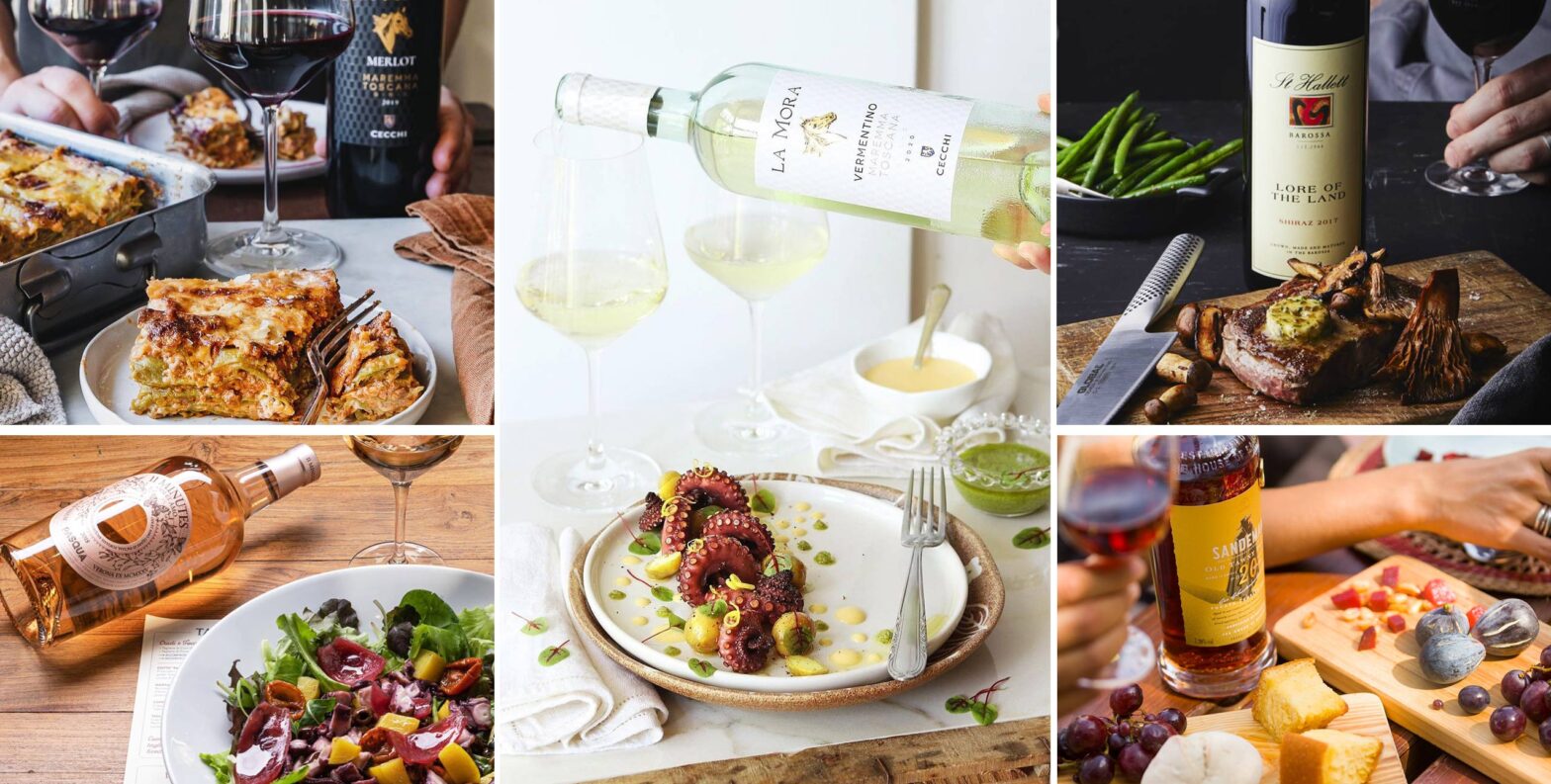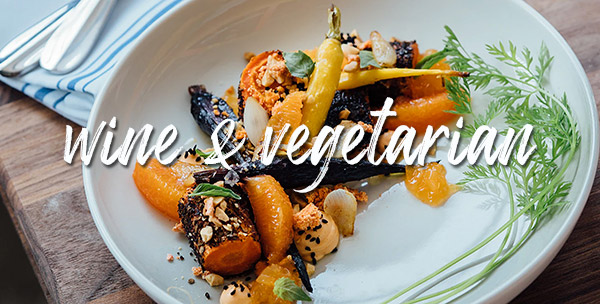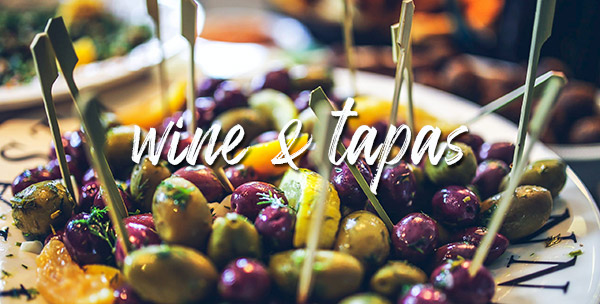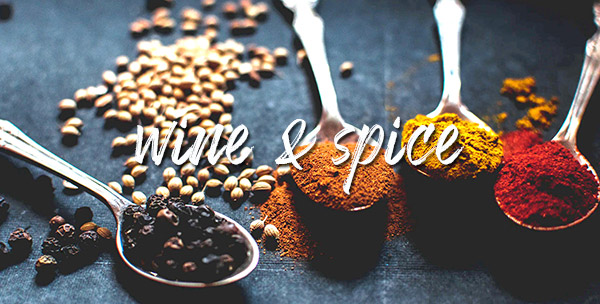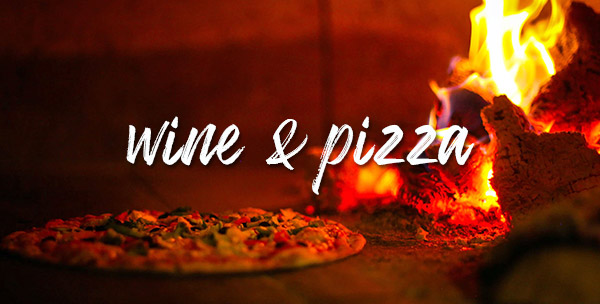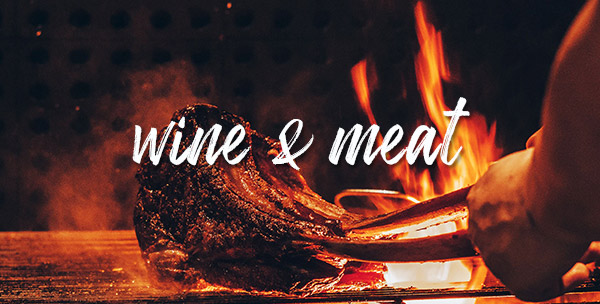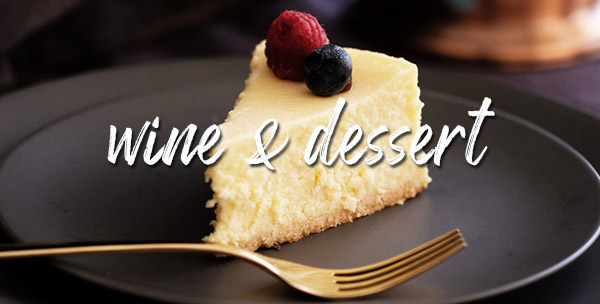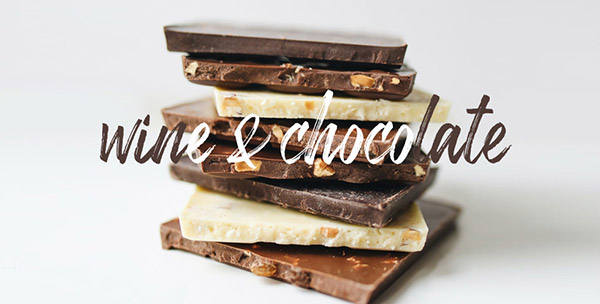When looking to pair a wine with cuisine...
Try to focus on pairing the nature, strength of flavours, mouth-feel, intensity and length of the dish in question with the wine. Wine and food are meant for each other; each complement, enhance and strengthen the experience of the whole, they bring out the best in each other.
Consider whether a dish is ‘light’ - ‘medium’ or ‘heavy’ in nature - in general, look to pair a crisp, lighter-style wine with a light dish; a medium-style wine to pair with a slightly fuller dish; and a full-bodied wine to go with and complement a richer, heavier more intensely flavoured dish - and so forth...

Seafood:
Factors to take into account - are you starting with shellfish or seafood cooked simply and served on their own or with a salad with a lemon dressing. They work well with wines that share a natural undertone of acidity (e.g. Sauvignon Blanc, Riesling or Pinot Grigio). Think about the key flavours in a dish the same way you think about the flavours in wine - as families of flavours.
If a dish has more character, it has been lifted by seasoning, or has it been grilled or smoked, it will pair well with lightly oaked white wines. Does it have a firm texture or spices, then it can pair with different fuller styles of white wines or a Rosé. Then consider which wines offer complementary flavours, citrus or herbal notes etc. Take notice of a foods texture that is similar to that of the wine - and wines whose intensity of flavour match - enjoy the journey.

Tapas:
Pairing wine with tapas is a great tasting experience - a Rosado (Rosé wine) can pair well with a good seafood Paella. And youthful, Rioja red wines are an enjoyable pairing with meat style tapas like chorizo.
In fact most tapas’ sessions can start with a chilled dry sherry, then move onto a Rosado/Rosé or a Spanish white wine like an Albariño, or a crisp dry Riesling, or even a Chablis, with seafood tapas and then move onto a red Rioja Crianza or light Syrah, or a Rhone-Valley red blend with meat or mushroom-based dishes.
Then for those slow cooked, roasted or BBQ cooked meatier tapas you can pair a Gran Reserva, a Carménère and even Cabernet Sauvignon based red wine. - enjoy the journey.

Meat:
Wine and food enhance and strengthen the experience of the greater whole, they bring out the best in each other. Consider whether a dish is ‘light’ or ‘heavy’ in nature - in general, look to pair a light-bodied wine to go with a light dish, a medium-bodied wine to match a fuller dish, and a full-bodied wine to go with a heavy dish.
Try to focus on the flavours in each different meat dish, the same way you think about the flavours in wine - as families of flavours. Lets look at your menu - as there are so many different wines in the world - there are so many varied ways to cut, cure, season, cook and serve meat cuisine - enjoy the journey.

Cheese:
Cheese is a ‘food’ group that most of us take for granted and for some, even less thought into how it should be served and with which wine. Most wine and cheese matches are made without much thought or experience - simply by habit, or routine, a large proportion of people pair wine and cheese poorly.
One of the keys to choosing a wine to suit a particular cheese is to take a moment to try to find a style of wine with qualities to match or complement. Successful wine and cheese matching should be based on similarities rather than contrasts. Match the weight of the wine to the character and intensity of the cheese. I know everyone will surprise themselves and the result will be a more diverse, varied and more enjoyable wine & cheese experience. - enjoy the journey.

Vegetarian:
Pairing vegetarian dishes with wine can seem intimidating, especially when most wine and food guides focus on pairings involving either fish or meat being the key ingredient. But the same concepts apply when looking to complement and bring out the best in each dish. You have to think about the natural fats, oil dressing, acidity, texture, sweetness, tartness, temperature and flavours - all play a crucial role in pairing vegetarian cuisine with wine.
The key to an enjoyable pairing, is looking to match the food’s intrinsic qualities with the wine’s characteristics, style and winemaking (i.e. acidity, tannins or use of oak). You know when you have a winning combination, when all the characters mold into each other and hidden flavours dance on the taste-buds - your palate is then cleansed and refreshed, ready for the next bite.

Pizza:
Factors to take into account - Pizza's with a Greek Feta or salads with a lemon dressing work well with wines that share a natural undertone of acidity (e.g. Riesling or a Pinot Grigio). Think about the key flavours in a pizza the same way you think about the flavours in wine - as families of flavours.
If a pizza has mushrooms, it has an earthy flavour; if it has chicken, it will pair well with oaked white wines. Does it have meat, of smokey notes, then it will pair with different styles of red wines - and so on. Then consider which wines offer earthy flavours, fruity flavours, herbal flavours etc. Take notice of a foods texture that is similar to that of the wine - and wines whose intensity of flavour match - enjoy the journey.

Spice:
Enjoying or enduring different levels of spicy cuisine - your taste buds are looking for something refreshing & calming, that does not clash with fiery flavours like chillies, dried-herbs, hots spices and sauces that are the signature of these varied dishes.
Pairing wine with hot and spicy dishes can be a challenge, not least because of the many infused layers of flavours and multiple ingredients involved..., but also because most of us have had a least one bad experience where the wine chosen was completely overpowered or detracted from the dish, or worse clashed, so here I try to help some guidelines - enjoying the journey.

Dessert:
When pairing a wine with desserts, i.e. ice-cream, meringue, cakes, based in ingredients from fresh fruits through to dark chocolate. The wine should be at least as sweet, if not a touch sweeter, than the main ingredients in the dessert (and to some degree the sweet sauce) you are serving it with. Otherwise, the taste may quickly turn towards sour notes.
Just as you do with other cuisine - match lighter, more elegant flavoured desserts with lighter-bodied wines; likewise, the stronger, more intense and bitter/dark the chocolate, the more full-bodied the wine should be. For example, a bittersweet chocolate tends to pair well with an intense, full-flavoured Amarone or a full bodied LBV 'Late Bottled Vintage' Port - enjoy the journey.
